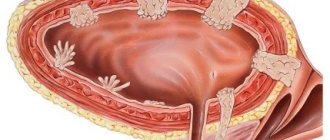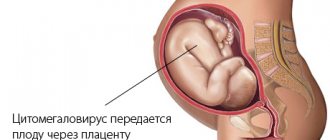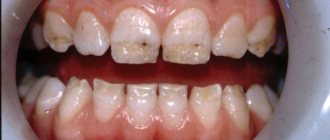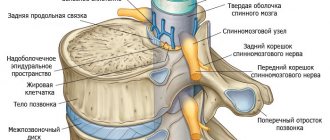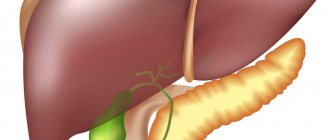Bladder polyps and cancer
Bladder polyps often cause a person to go to the toilet more often
A bladder polyp contains abnormal cells, but even though these cells are abnormal, they are not always cancerous.
A bladder polyp can be benign and not cause any harm to the body. Benign formations or tumors do not metastasize, that is, they do not spread to other tissues and organs of the body. Benign tumors in the bladder, as a rule, are not life-threatening.
However, bladder polyps can be cancerous, and cancers in the bladder can spread to other areas of the urinary tract or nearby tissue.
Bladder cancer is one of the most common types of cancer, and therefore, after diagnosis of polyps, patients need regular monitoring by a doctor, even if the polyps were initially determined to be benign.
Polyp in the bladder in women: symptoms, causes and treatment methods
Benign formations of epithelial cells on the surface of an organ are considered to be polyps.
They can be localized on various tissues, including the upper layer of the bladder. The disease is a serious pathology.
If left untreated, there is a possibility of developing complications from the genitourinary system and degeneration of the polyp into a malignant tumor.
Features of the disease
A bladder polyp is a benign neoplasm. It consists of mucous membranes filled with blood vessels and capillaries. Each polyp has a body, a stalk and a base. Its localization can be varied:
- at the neck of the bladder;
- on the walls of the organ;
- in places of narrowing.
Neoplasms can be localized or widespread. In the first case, their number is no more than 4-5 units. With widespread diffuse polyposis, several hundred small or large foci are observed.
True and false neoplasms are also distinguished. The latter include deposits of urates, calcifications and other stones that do not have vascular components. False polyps develop against the background of urolithiasis.
Causes of pathology
Symptoms (a polyp in the bladder in women is a fairly common benign tumor) are not as pronounced as in men. However, the causes of the disease in both sexes are the same:
- inflammation of the genitourinary system;
- hormonal imbalances in the body;
- urolithiasis disease;
- hereditary predisposition;
- stagnation of urine;
- metabolic disorders, including diabetes.
It is quite difficult to determine the exact cause of the appearance of polyps. Typically, several factors play a role in the etiology of the disease. The most common cause of urine with blood in women is cystitis that is not treated in a timely manner. In this case, there is significant damage to the mucous membrane of the bladder.
Possible complications
One of the dangerous complications of pathology is the degeneration of benign elements of a neoplasm into malignant ones. There are two types of oncology. In the case of the invasive version, cancer cells grow deep into the walls of the urinary tract, and in the non-invasive version, along the upper layer of the organ. Both types are considered dangerous.
Ignoring dangerous symptoms can lead to complications in the form of constant inflammation of the urinary tract that becomes chronic. A polyp in the bladder in women can provoke disorders in other organs and infection of adjacent tissues.
Diagnostic methods
To determine the location of the polyp, its structure and degree of growth, a set of diagnostic measures is prescribed. It consists of the following activities:
- General analysis of urine and blood. Allows you to identify the general health of a woman and the presence of inflammatory processes in the body.
- Ultrasound. With the help of hardware research, it is possible to determine the structure of the tumor, its size and exact location.
- Cystography. This is an x-ray examination that is carried out using a contrast agent. The technique allows us to examine pathological foci with particular accuracy.
- Cystoscopy. The procedure is necessary for visual assessment of the condition of the urinary tract.
Diagnostic measures can be adjusted depending on associated symptoms. A polyp in the bladder in women is usually detected during an ultrasound examination. It is important not only to diagnose the pathology, but also to determine the root cause of its occurrence.
Treatment Options
There are several areas of treatment for polyposis:
- Waiting tactics. Used in the absence of symptoms, single tumors.
- Conservative therapy. It involves symptomatic drug treatment, and is also used during the rehabilitation period after surgery.
- Surgical intervention. Used when the clinical picture is severe, during exacerbations of the inflammatory process.
- Ethnoscience. It is an auxiliary method of treatment.
Each of the therapeutic methods for polyposis will be discussed in detail later in the article.
Drug therapy
Conservative treatment of polyps in the bladder in women is prescribed when characteristic symptoms appear. Typically, drugs from the following groups are used to relieve it:
- Uroseptics (“Furmag”, “Canephron”).
- Antibiotics (fluoroquinolones, macrolides, penicillins).
- Antispasmodics and painkillers (“Nurofen”, “Spazmalgon”).
- Vitamin complexes.
- Diuretics for difficult, unpleasant urination in women (Diuver, Furosemide).
The effectiveness of the therapy must be constantly confirmed by tests. If there is no result, surgical intervention is recommended.
Carrying out the operation
Surgical treatment of polyposis is used quite often. The main indications for the operation are the following:
- large tumor size;
- polyps interfere with the normal process of urination;
- bleeding due to polyp rupture, tissue damage.
Before the operation, the woman is prescribed an additional examination in order to exclude possible contraindications.
Surgery is performed under general anesthesia, using a cystoscope and a diathermocoagulator. Instruments for manipulation are brought to the polyp.
Then the doctor uses a special loop to grab the tumor. Due to the electrode, the element itself is heated, after which the polyp is removed.
At the same time, the doctor “seals” the damaged area to prevent bleeding.
In some cases, radical surgery is recommended. During this procedure, the doctor excises part of the organ with polyps or the entire bladder. The indication for such an intervention is a high risk of malignancy of the tumor. In a complete resection, the removed organ is replaced with part of the small or large intestine.
Help from traditional medicine
Traditional methods of treatment are considered auxiliary. They do not allow you to completely get rid of tumors, but they relieve the accompanying symptoms well. The following recipes are considered the most effective:
- Herbal baths. To prepare the decoction, you will need to mix celandine, sage, chamomile, and calendula in equal parts. Approximately 100 g of raw material must be poured with a glass of boiling water, cooled to a comfortable temperature and strained. The decoction is added to the water. Baths can be practiced daily, but not more than 14 days.
- Celandine juice. This remedy is used for frequent urination in women. It is taken a teaspoon several times a day, before meals.
You can additionally include lingonberry and cranberry fruit drinks in your diet. They are considered a good natural antiseptic and have a diuretic effect.
Prognosis for recovery
In the case of timely and successful surgery to remove polyps in the bladder in women, the patient can quickly return to her usual lifestyle. If neoplasms occur or the disease recurs, a decision is made to re-diagnosis. During the examination, it is possible to identify new causes of the disease, after which treatment tactics are adjusted.
If polyps are detected at an early stage and there is no malignant process, the prognosis for recovery is favorable.
Prevention methods
Prevention methods recommended by doctors do not exclude polyposis, but significantly reduce the likelihood of its development. Such measures include:
- Timely treatment of genitourinary diseases.
- Adequate fluid intake throughout the day.
- A balanced diet with a minimum amount of harmful foods.
- Control of regular urination.
- Periodic examination of the body, especially if you are predisposed to such pathologies.
The causes of bloody urine in women and pain during urination should not be ignored. Timely therapy allows you to avoid complications and related health problems.
Source
Symptoms
Some people do not show symptoms in the early stages of polyp development. Others notice signs of polyps immediately or observe them as the formations progress.
Symptoms of bladder polyps include the following:
- constant or urgent urge to urinate;
- abdominal pain;
- pain during urination;
- frequent urination;
- blood in urine.
If a person experiences any of these symptoms, they should be taken seriously as they may be signs of bladder cancer. Careful diagnosis is required in each case because these symptoms are common to many other medical conditions, including urinary tract infections, urinary stones or prostate inflammation.
Diagnostic measures
To clarify the nature of the occurrence of unpleasant symptoms, general clinical tests of blood, urine, and feces are prescribed. Instrumental diagnostics are required, including endoscopic and x-ray examination methods.
Particular information content is obtained using:
- cystoscopy;
- excretory urography with contrast agent;
- Ultrasound examinations.
Cystoscopy
Cystoscopy is an endoscopic research method, the essence of which is the introduction of a special probe into the organ cavity. The equipment is inserted using urethral catheterization. During the manipulation, it is possible to take pathological tissue for histological examination to exclude or justify the presence of atypical cells in the polypous lesion.
Excretory urography
Excretory urography refers to x-ray research methods. First, an intravenous drug is administered, and then a series of X-rays are taken at different time periods. Due to the high information content of the method, it is possible to reliably determine the nature of the tumor and the function of the organ.
Ultrasound of bladder polyp in women
Ultrasound is an accessible and simple way to assess the condition of the organ, the conductivity of the ureters, the nature of the tumor and its external structure. The safety and non-invasiveness of the method does not require special preparation. An important aspect is the absolute fullness of the bladder.
The technique usually consists of two stages. First, a study is done with a full organ, and then with residual urine.
There are several types of bladder ultrasound in women:
- Transabdominal - examination of the organ cavity through the abdominal cavity;
- Transrectal - examination through the rectal canal;
- Transvaginal - study of the cavity through the vaginal canal;
- Transurethral - the study method is carried out under local anesthesia.
These studies are based on the study of some important clinical criteria:
- outlines of the neoplasm, contours;
- degree of echogenicity;
- localization.
The general condition of the organ is also important, but its size is not taken into account, since they constantly change under the influence of the volume of urine.
Poor visualization of the ureters indicates improper preparation for an ultrasound examination. In this case, the examination is carried out again.
Causes and risk factors
People can reduce their risk of developing bladder cancer by quitting smoking
Bladder polyps are groups of abnormal cells. Such cells mutate, grow uncontrollably and cluster together, forming benign or malignant tumors. The exact reasons for these processes have not been established.
A polyp that appears quickly and begins to spread to other areas of the body is usually cancerous. Several factors can lead to the growth of bladder cancers.
The causes of bladder cancer include the following.
- Irritation. Regular irritation of the inside of the bladder, such as from persistent infections, urinary stones, or insertion of a catheter, can lead to the appearance of abnormal cells that can become cancerous.
- Smoking. Tobacco smoke increases the risk of developing many types of cancer and can lead to bladder cancer. In smokers, the blood absorbs harmful chemicals from tobacco smoke, which are filtered out by the kidneys and then enter the bladder along with urine.
- Environmental factors. Harmful chemicals or arsenic consumed in water can accumulate in the bladder. People who work with paints, textiles, leather or machinery may have an increased risk of developing cancer. In addition, radiation can contribute to the development of malignant tumors.
- Certain medications. Some pharmacological products may increase the risk of developing bladder cancer. Such products, for example, include the diabetes treatment drug pioglitazone (Actos). It should be noted that researchers are still studying the connection between medications and cancer.
- Floor. Men are significantly more likely to suffer from bladder cancer compared to women.
- Age. According to the American Cancer Society, 9 out of 10 people with bladder cancer are over 55 years of age.
- Race. Caucasians have a higher risk of developing bladder cancer compared to other people. The reasons for this connection are being studied.
- Gene mutations. Some people may inherit genes from their parents that increase their risk of cancer, but this factor is very difficult to track. Moreover, bladder cancer does not appear to be inherited.
- Human papillomavirus (HPV). For some people at increased risk of developing bladder cancer, this risk may increase even more if they are infected with human papillomavirus.
Diagnostics
Proper diagnosis of bladder polyps is important because polyps can spread quickly if left untreated.
During diagnosis, the doctor may ask the patient about symptoms and medical history. If the physician finds signs of polyps or bladder cancer, he will most likely refer the patient to a urologist for in-depth examination.
The urologist will recommend tests to help him identify polyps or bladder cancer.
To better view bladder polyps, doctors usually use cystoscopy. In this procedure, the doctor inserts a thin tube with a light and a camera at the end into the bladder. A needle-like instrument may be attached to this tube to perform a biopsy, which is to remove a sample of the polyp's cells for laboratory testing for cancer and other abnormalities.
In addition to a biopsy and cystoscopy, doctors may recommend other tests. Some of them are given below.
- Urine cytology. In this test, the doctor checks the urine for signs of cancer.
- Tumor markers in urine. Your doctor may perform tests to look for specific chemicals released by cancer cells.
- Bacteriological culture. This test allows you to identify all types of bacteria that are present in the bladder. Bacterial culture is usually performed to exclude infections.
- Imaging diagnostic procedures. Magnetic resonance imaging and computed tomography can help doctors visualize polyps and see if tumors have spread to other areas of the body.
Treatment
Benign polyps may not require treatment, but doctors usually remove such growths if they cause discomfort to the patient
Therapeutic approaches depend on the type of polyp that was identified during diagnosis.
Benign polyps that do not cause symptoms sometimes do not require treatment at all. However, doctors may suggest that the patient monitor such formations.
Large polyps or those that cause symptoms are usually removed.
Transurethral resection of the bladder is one of the methods for removing polyps. During this procedure, the doctor inserts a cystoscope into the bladder through the urethra. Attached to the end of a cystoscope is a surgical instrument that removes abnormal tissue using a wire, laser, or electricity.
Cancerous polyps or growths that spread to other areas of the body require more extensive treatment, which, in addition to surgery, includes chemotherapy or immunotherapy.
If the cancer has spread into the deep muscle tissue of the bladder, your doctor may recommend complete removal of the organ. This procedure is called cystectomy.
Depending on which organs are affected, the surgeon may recommend partial removal. Such bodies, in particular, include the following:
- urethra;
- uterus;
- ovaries;
- prostate.
To improve their condition, a person can change their lifestyle or resort to alternative medicine. Specifically, it can do the following:
- stop smoking;
- change your diet;
- take vitamins and supplements;
- try acupuncture.
Prospects for treatment for bladder polyps
Treatment prospects for bladder polyps largely depend on whether the polyps are cancerous. Benign tumors that the doctor removes from the bladder will no longer bother the patient.
The prospects for treating malignant polyps and bladder cancer depend on the stage of the disease. If doctors detect cancer quickly, the chances of survival will be high, which is why early diagnosis is extremely important.
Anyone experiencing the symptoms listed above, such as blood in the urine, pain or difficulty urinating, should contact their doctor for a thorough medical examination.
Features of bladder surgery
Normal bladder function is very important for a full quality of life. This is why it is so important to support this organ during treatment.
Fortunately, bladder-conserving surgeries are much more common than complete removal. This is partly due to the fact that almost all diseases of this organ are immediately noticeable by symptoms and changes during urine tests. Even a malignant tumor can be easily detected at an early stage if you consult a doctor in time.
Structure of the urinary system
This organ has a natural connection with the environment - the urinary tract. It can be used for examinations and many surgical procedures.
Main types of bladder surgery
All operations on the bladder are divided by type of access:
- Open (with abdominal incision).
- Endoscopic (transurethral or transvaginal).
Types of operations
- Cystolithotripsy and cystolitholapaxy (removal of stones).
- Bladder resection.
- Transurethral resection.
- Cystectomy.
Anesthesia can be general, local or spinal.
The method of anesthesia depends on the severity of the patient's illness, the presence of other chronic diseases, and the patient's preference.
Main stages of examination before surgery
To clarify the diagnosis, it is necessary to accurately localize the pathology, size and structure of the tumor:
- Ultrasound examination of the pelvic organs. This is the simplest and most accessible examination, which gives the first impression of the pathology. In addition to a routine skin examination, transurethral, transvaginal, or transrectal ultrasound may be performed.
- Cystoscopy. Endoscopic examination. A cystoscope is inserted through the urethra into the bladder cavity, allowing the doctor to see the inner surface of the organ in order to remove abrasions for histological examination.
- Urine examination for atypical cells.
- Contrast urocystography.
- CT scan. Used to determine the size, exact location of the tumor, the condition of neighboring organs, and lymph nodes.
- Intravenous urology of the urinary tract. Permeability and condition of the underlying urinary tract
- In the case of tumors, CT of the entire abdominal cavity is also used to detect distant metastases.
It is not necessary that all of these examinations are necessary for every patient. They are prescribed individually in the further course of diagnosis.
General blood and urine tests, biochemical blood tests, blood clotting indicators, blood group determination, lung x-rays, HIV antibodies, syphilis, viral hepatitis, examination by a therapist and related specialists on chronic diseases are prescribed immediately before each operation.
In the case of an inflammatory process, urinary bacteria are prescribed and, if possible, treatment of the inflammation with antibiotics.
It is highly recommended to quit smoking. You should not eat or drink for six hours before surgery.
Cystolitholapaxy
Cystolitholapaxy is the removal of stones from the bladder.
An autopsy is performed with sufficiently large concretes or using cystoscopy. In transurethral surgery, a special lithotripter is inserted into the bladder. There are various devices (mechanical, ultrasonic, electrohydraulic, laser). The stone is broken into small fragments, which are then washed and sucked out using a special suction device.
Bladder resection
Bladder resection is a procedure for removing part of an organ affected by a pathological process.
Resection can be performed in two ways:
- Open resection (partial cystectomy).
- Transurethral resection (TUR).
Open resection
Access - abdominal incision. If the tumor is located in the posterior part of the bladder, perform a lower middle laparotomy and open the peritoneum. An arcuate incision in the supraorbital region and an extraperitoneal approach are possible if the tumor is located anteroperitoneally.
The tissue is cut layer by layer and the bladder is removed into the wound. The surgeon then cuts the wall and removes the tumor.
This resection method is rarely used and is currently significantly inferior to transurethral resection. However, this method is indispensable for large tumors and diverticula. Open resection allows for a thorough examination of the organs adjacent to the bladder, and in the case of lymph node involvement, their removal.
Transurethral resection (TUR)
TUR is the excision of the tumor without making an incision in the abdominal wall.
The bladder is filled with a sterile saline solution, then a cystoresectoscope is inserted through the urethra, which the surgeon uses to remove the tumor or polyps. It looks like the tumor is scraping away layer by layer. The affected tissue is removed and healthy tissue is removed. The material is sent for cytological examination.
All actions are performed under visual control, since everything that happens is displayed on the monitor. In addition to the usual surgical method TUR, there are others - laser, electrocoagulation, photodynamics.
After surgery, a catheter remains in the bladder.
transurethral tumor resection
Advantages of TUR over open resection:
- Less tissue trauma.
- Reduced risk of bleeding.
- Fast recovery, lower risk of complications. You may be up and walking again within a few hours after surgery.
- There is no risk of suture divergence.
TUR conditions:
- Stage 1 cancer if the tumor does not grow into the muscle layer.
- The tumor size is no more than 5 cm.
- No metastases to the pelvic lymph nodes.
- There is no damage to the initial section or urinary tract.
After surgery, on the first day, the bladder is washed with antiseptic solutions. The catheter is removed after a few days, sometimes left in place for several weeks.
Complete healing of the postoperative wound occurs within three months. It is recommended to limit lifting and avoid driving.
Recommended diet, except spicy and salty.
According to reviews from patients who underwent TOUR surgery:
- There is no pain during the operation itself.
- The operation takes about an hour.
- After the operation, there is a moderate burning sensation, cramping and the desire to urinate.
- Urination causes discomfort and a burning sensation for several days.
- There is blood in the urine for about a week.
- You can return home in a few days.
Cystectomy
Cystectomy is a radical operation in which the bladder is completely removed, often along with adjacent organs. This is an extreme step in urology where organ sacrifice results in death for the patient.
Indications for cystectomy
- Severe deformation of the bladder.
- Bleeding.
- Swelling of all bladder walls (second and third stages of cancer).
- Invasion of the tumor into neighboring organs.
- Rapidly recurring superficial cancer that cannot be cured with chemotherapy.
- Recurrence of tumor after TUR.
- Large tumor size (more than 5 cm).
- The tumor is localized both in the neck and in the bladder-urea triangle.
Contraindications for surgery
Cystectomy is contraindicated if the patient has a severe general condition. In such cases, palliative surgery may be performed to relieve urinary retention.
Progress of the operation
Access is through a supraorbital incision. Then all the ligaments of the bladder are cut, i.e. their mobilization takes place.
In addition, all arteries supplying the bladder and veins carrying blood flow are ligated and cut.
Then a clamp is placed on the part of the urinary tract that is closer to the bladder, which is crossed. The bladder then enters the wound, separates from adjacent organs, and is removed.
Video: cavitary cystectomy – medical animation
Complications of operations
Among the complications after bladder surgery
- bleeding.
- Connection with infection.
- Tamponade of bladder thrombi.
- Obstruction of the urinary tract.
- Urethral stricture (narrowing).
- Delay in urination.
- Perforation of organs.
- Fistula formation.
- Return of cancer.
You may be interested in: Wen in the groin - causes and treatment of lipoma in the groin in men
Life after bladder removal
Immediately after surgery, you must choose a new method for draining and collecting urine.
Several options are possible:
- Removal of the ureter onto the skin, in which urine drains outside the patient's body into a urine receptacle. If necessary, the ureter should be emptied, carefully monitored for hygiene and replaced after a while. The quality of life of these people deteriorates significantly: They experience difficulties with hygiene, the risk of kidney infection increases sharply, and they suffer from a constant smell of urine.
- Ureteral transfer to the colon (eg, ileum or sigmoid).
- Formation of an artificial bladder from part of the intestine. This will accommodate the part of the intestine into which the urethra is transplanted and create an anastomosis (connection) with the urinary tract. This allows the patient to urinate as usual and his lifestyle remains virtually unchanged.
You should not eat for about two days after surgery because the cystectomy can damage the intestines and the patient will need some time to heal. Spicy, fried and fatty foods should also be excluded. It is better to steam food without salt and spices.
Video: about cystoplasty to restore normal urination
Bladder cancer
The method of cancer treatment depends on both the stage and the morphological structure of the tumor. In the early stages, an attempt is made to perform organ-conserving surgery, in which only the tumor is removed. Typically, the aforementioned transurethral resection (TUR) is performed for this purpose.
Chemotherapy for bladder cancer
After removal of the tumor, intravesical therapy with chemotherapy or immunological drugs is carried out: The use of this vaccine for this purpose has long been used in medicine and ensures an almost zero percentage of tumor recurrences.
If the tumor has several metastases in the pelvic lymph nodes or the tumor has penetrated deep into the wall of the bladder, the question of chemotherapy and radical cystectomy arises.
In a radical cystectomy, the bladder is removed along with the periblasal tissue and pelvic lymph nodes. In men, the prostate and seminal vesicles are also removed; in women, the uterus, appendages and anterior wall of the vagina are removed. In addition, part of the urethra that belongs to the bladder is removed.
Cost of operations
If indicated, the operation is performed free of charge in urology departments of public clinics.
In private clinics, the cost of operations varies widely: the cost of transurethral resection (TUR) ranges from 95 to 125 thousand rubles, open resections - from 50 to 70 thousand rubles, cystectomy - from 100 to 200 thousand rubles.


